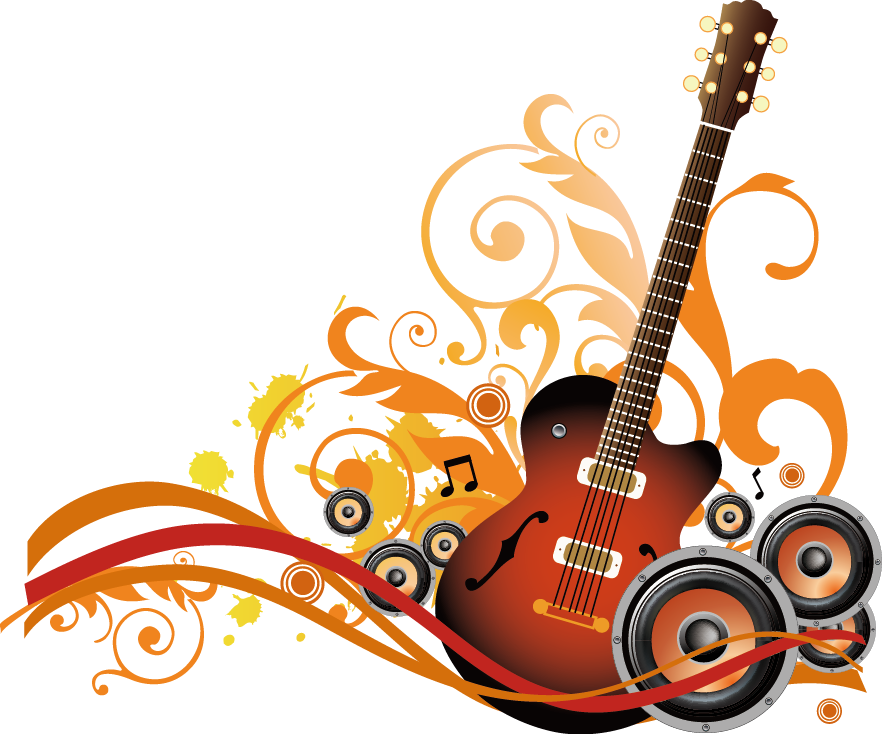Konklusions
Komplete’s core plug-ins are all industry-leading examples in their particular fields, and the instruments and effects built on them rank among the finest and most innovative music-making tools you’ll find. On top of this, the included sound libraries are unceasingly impressive in their range, versatility, authenticity and quality. Yet despite the sheer volume of stuff jammed into Komplete, its pricing is exceptionally reasonable and would represent good value even if it only included the instruments and effects or the sound libraries; by including both, even the top-of-the-line Ultimate Collector’s Edition is something of a steal (albeit one you may have to save up for!).
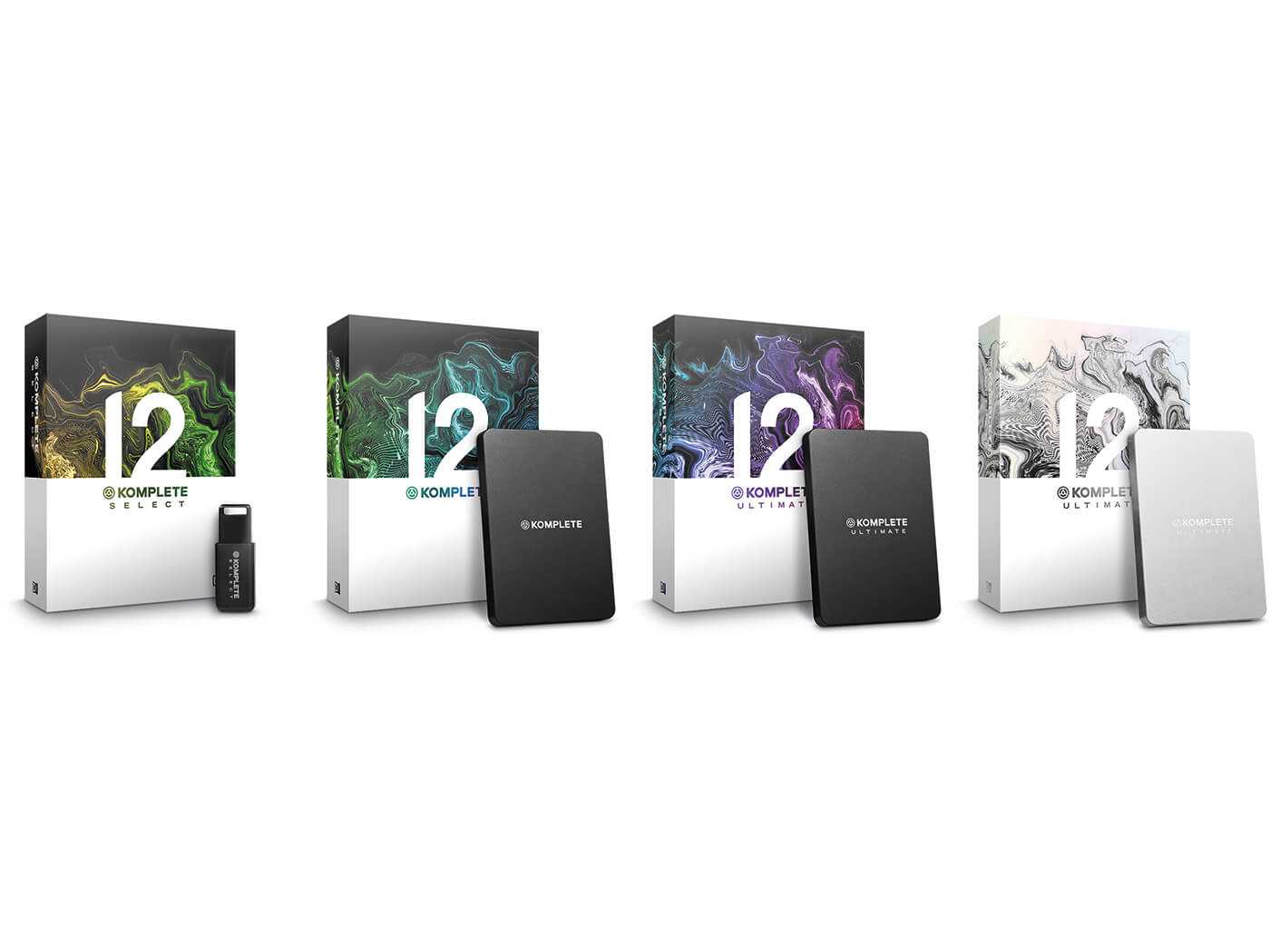
Even though I’ve focused mainly on the Standard edition, Komplete’s size and range means I’ve done little more than explore the foothills of this huge mountain range of top-drawer tools and sounds; when it comes to the Ultimate editions, the sheer scale and scope borders on the overwhelming. Of course, quality and quantity aren’t meant to go together – where you find more of one, you tend to encounter less of the other – but Native Instruments has long since thrown such conventional wisdom out of the window, and Komplete 12 stands as a mightily impressive testament to that fact.
Обновление Kontakt 6: новые инструменты
На самом деле это отдельное стэнд-алоун приложение, призванное помочь разработчикам повысить эффективность процесса сборки. Он состоит из двух элементов: отладчика и редактора инструментов.
Отладчик предназначен для поиска и устранения любых проблем с кодом компоновщика. Он подключается ко всем запущенным экземплярам Kontakt в виде плагина или автономно.
Редактор инструментов также соединяется со всеми запущенными экземплярами Kontakt и автоматизирует повторяющиеся задачи, позволяя разработчику сосредоточиться на более творческих аспектах построения библиотеки.
Например, редактор инструментов берет информацию из высоты тона и амплитуды, чтобы автоматически сопоставить их со слоем скорости, основываясь только на аудиоинформации из сэмплов редактором инструментов.
С новым контактом теперь намного проще переупорядочивать, добавлять или удалять группы и зоны, а также редактировать некоторые их свойства, такие как настройка, громкость и отображение.
Обновление до Kontakt 6.5.2 имеет больше смысла в этом случае, потому что вы получите Kontakt 6 вместе с множеством других звуков и инструментов. Может быть, Native Instruments хотели, чтобы это было именно так, кто знает.
На мой взгляд, это хорошая покупка как для опытных музыкантов, так и для начинающих пользователей, так как новые и более интересные библиотеки будут создаваться с использованием новых функций, и новые пользователи не будут ошеломлены огромным выбором звуков, включенных в Komplete Bundles.
Помогла статья? Сделай репост!
Disclaimer
The information in this document is subject to change without notice and does not represent a commitment on the part of Native Instruments GmbH. The software described by this document is subject to a License Agreement and may not be copied to other media. No part of this publication may be copied, reproduced or otherwise transmitted or recorded, for any purpose, without prior written permission by Native Instruments GmbH.
“Native Instruments”, “NI” and associated logos are (registered) trademarks of Native Instruments GmbH.
Mac, Mac OS, GarageBand, Logic, iTunes and iPod are registered trademarks of Apple Inc., registered in the U.S. and other countries.
Windows, Windows Vista and DirectSound are registered trademarks of Microsoft Corporation in the United States and/or other countries.
All other trademarks are the property of their respective owners and use of them does not imply any affiliation with or endorsement by them.
Document authored by: Native Instruments
Document version: 1.0 (06/2011)
Вопросы обновления сэмплера Kontakt
Наконец, при загрузке некоторых наборов следует обратить внимание на версию плеера, с которой они могут работать
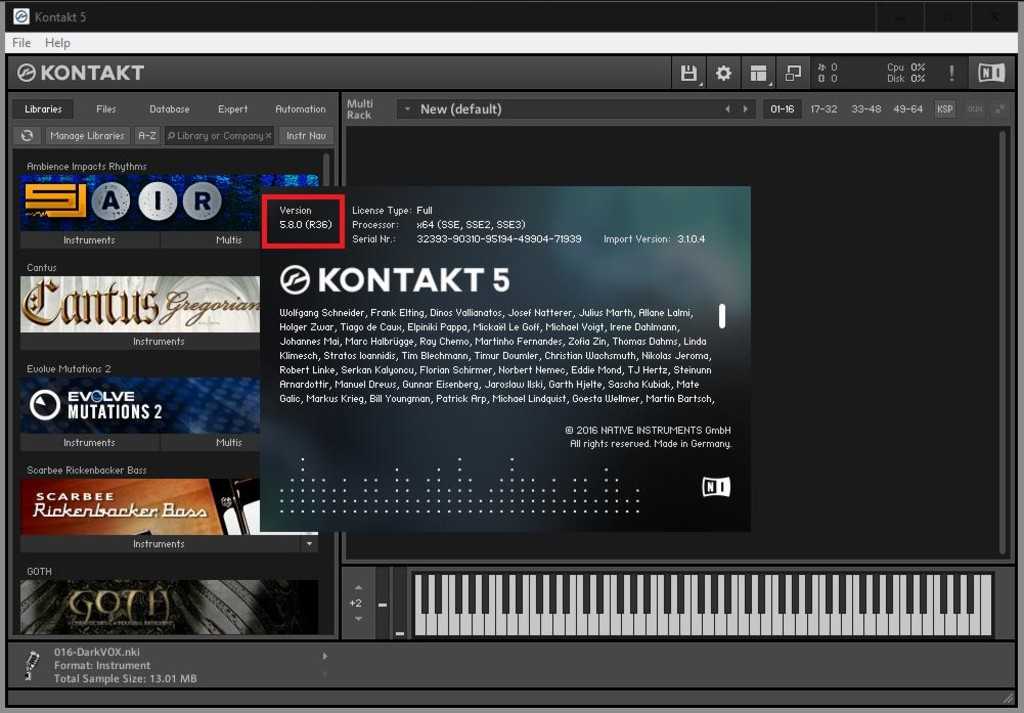
В случае, если требуется одно из последних обновлений, его следует установить в обязательном порядке, поскольку инструмент в устаревшей модификации не только не будет воспроизводиться, но и не загрузится вообще. Сам же сэмплер может использоваться и в виде стационарной версии (Standalone), и в виде плагина VST или другого формата, к тому же, является платным, не говоря уже и о самих звуковых наборах. Однако найти взломанные версии этого ПО в русскоязычной части Интернета можно совершенно запросто, причем и с ключами активации, и с кей-генераторами, и с инсталляторами в виде SimLink Installer, хотя их использование является, мягко говоря, противозаконным.
«Play» cерия
Kontakt поставляется с тремя инструментами в своей новой серии Play; они не являются частью библиотеки Kontakt, представляют собой отдельные загрузки, которые активируются через приложение Native Access и имеют свои собственные записи в браузере библиотеки. Все три используют модуль волновой таблицы, поэтому не имеют обратной совместимости с предыдущими версиями Kontakt. Описанние очень приблизительное, это:
Analog Dreams (сэмплы аналоговых синтезаторов, обработанных внешними эффектами);
Ethereal Earth (гибридные синтезаторы и акустические инструменты, обработанные и наложенные);
и гибридные клавиши (звуки, связанные с клавиатурой и фортепиано, сэмплированные с использованием микрофонов и экспериментальных магнитофонных эффектов переменной скорости).
Предустановки моментальных снимков(снэпшотов) представлены в различных категориях звука, и все три инструмента имеют общий формат, имея два слоя сэмплов A и B с контролем баланса. Есть шесть регуляторов макросов, чьи предопределенные функции могут, например, управлять отсечкой, уровнем эффекта, скоростью LFO или положением волновой таблицы, в зависимости от загруженного пресета снэпшота.
Выпадающие меню для слоев сэмплов A и B позволяют заменять предустановленные сэмплы другими — каждый инструмент Play предлагает более 100 на выбор. Редактирование довольно ограничено, вы можете настроить регуляторы Macro, назначить их на MIDI-контроллеры, поменять местами сэмплы, настроить баланс A / B и сохранить результат как пользовательский снимок, но это все.
Функции регуляторов макросов не могут быть изменены, а инструменты «заблокированы», поэтому вы не можете залезть под капот и что-либо настроить. При этом среди снимков есть несколько хороших звуков, но я подозреваю, что эти инструменты могут меньше понравиться людям с приличной коллекцией VST и больше тем, кто менее хорошо оборудован.
SoundIron Snack The Cat
SOUNDIRON · Blake Ewing — Sirens
Звуки животных — идеальный кандидат на основу для нестандартных сигналов. Многие саундпродюсеры отправляются на бесплатные стоки наподобие каталога BBC или Freesound, скачивают рыки львов или мычание коров и затем превращают их в поистине необычные сигналы.
SoundIron считают, что не только дикая природа может быть основой для звукового дизайна. Разработчики предлагают более домашний вариант — библиотеку Snack The Cat, состоящую из звуков кошки, живущих в офисе студии. Выбор правильный: питомец может стать новым музыкальным инструментом или озвучить инопланетного монстра.
Записанные сигналы были обработаны рядом эффектов, что привело к появлению множества новых инструментов. Так, например, в составе библиотеки найдутся пресеты перкуссии и органов, которые станут прекрасным источником вдохновения.
LOADING EFFECTS INTO FL STUDIO
Start by pressing F9 on your keyboard to bring up the mixer window.
Let’s go over to the right side of the mixer window where you see the 10 open slots labeled Slot 1 – 10. These are the places that you can load in effects.
You click on the arrow that is next to the Slot name and a drop down menu will come up.
Navigate to the more plugins option at the top of the window.
A menu of all the available plugins in FL studio will come up that looks like this:
Scroll to the bottom of the window and you will see the plugins from Native Instruments that you installed.
Double click on one. I chose Guitar Rig.
It will take a while for all the presets to load for the first time. So while that is loading up, go to the browser window on the left side of FL Studio.
Under plugin database, select Effects , and then choose the Native Instruments folder you just created.
After guitar rig has finished loading, you can click on the arrow at the top left of the plugin and choose the “add to plugin database (flag as favorite)”.
Or you can right click on the effect in the slot and choose the same option.
A pop up will come up and you can say okay to adding it to the Native Instruments category.
Then you can repeat the process for the rest of the plugins from Native Instruments.
When you are finished you should have a few plugins available under the Native Instruments heading:
Guitar Rig 5, Reaktor 6, and Supercharger.
Now you can easily load these into any of your mixer tracks.
And stretch
There’s also a new timestretch algorithm, Time Machine Pro, courtesy of zplane.development. This offers better real-time non-sliced stretching of tonal material and is a real step up from Time Machine 2.
You also get real-time sample reverse that works in conjunction with timestretching, which is pretty novel. Previous algorithms are still available — a good thing, since this one is more CPU-hungry.
Overall, Kontakt 5 has some pleasing additions, with the emphasis on features over content. Existing users who are more interested in the latter may question whether they really need to upgrade, though we suspect their opinion may change once third-party libraries start to leverage the new features.
Finally, for new users — particularly those wanting lots of sounds — stumping up a little extra cash would secure Komplete 8, which represents much better value for money.
Where Can I Get Free Kontakt Player Libraries?
When you want to use Kontakt Player, it is recommended to take advantage of the Komplete Start option by Native Instruments. This is because it gives you access to 9 sampled instruments for free:
- Play Series Selection – 3 hybrid instruments: Analog Dreams, Ethereal Earth, and Hybrid Keys
- Kinetic Treats – Textures and sounds from sampled children’s toys
- Expansions Selection – A collection of 1,500 samples and loops
- World – 6 instruments, including reed instruments, flutes, plucked instruments, percussion, and bagpipes
- Band – 13 pop and rock instruments, including acoustic drum kits, e-guitars, and organs
- Synth – Several contemporary synth leads, drum kits, basses, and pads
- Vintage – 13 instruments (resembling analog keyboards and synthesizers)
- Urban Beats – A drum loop production kit with 5 instruments
Besides these, you can find some free Kontakt Player libraries. However, they are more difficult to locate because they would need to be approved by Native Instruments, which is only possible when the creator pays for it. Some examples of such libraries are:
Arcane – A collection of esoteric and mysterious sounds. Half of them are available for free.
Soniccouture – Several Kontakt Player products are available for free, including piano, drums, and rocksichord.
What Are the Limitations of the Free Kontakt Player?
In order to promote Kontakt Full, when you install and start using Kontakt Player, the main features of the industry-leading software are activated. However, you can only use them with limitations. The limitations you should be aware of are the following:
- Extensive Instrument Editing – Only available for 15 minutes in demo mode
- Integrated Sample Editor – Only available for 15 minutes in demo mode
- 33 High-End Effects – Can only be used in the master section for 15 minutes
- 57 High-Quality Filters – Can only be used in the master section for 15 minutes
- Kontakt Script Processor Editing – 15 minutes available in demo mode
Kontakt 6
Although starting life some 20 years ago as a fairly standard software sampler, little different in terms of capability to the hardware samplers it was superseding, Kontakt has evolved into a powerful instrument development platform in its own right. With customisable graphical user interfaces, scripting support, and advanced playback, synthesis and effect engines, Kontakt provides the means for sound engineers and designers to create complex, unique, sample-based instruments, as well as to package these for distribution to others.
Kontakt 6 has a number of new features that makes it even more powerful and flexible than before. The most significant addition is the new wavetable module, which provides a completely new way to synthesise sounds based on whatever sampled source you’re using. This module is used in the three new instrument packs that come with the standalone version of Kontakt 6, and which are also included in Komplete 12: Analog Dreams, Ethereal Earth and Hybrid Keys. All three are similar in that they allow two sampled sound sources to be merged into a single instrument, with a simple set of eight controls for adapting and modifying the sound.
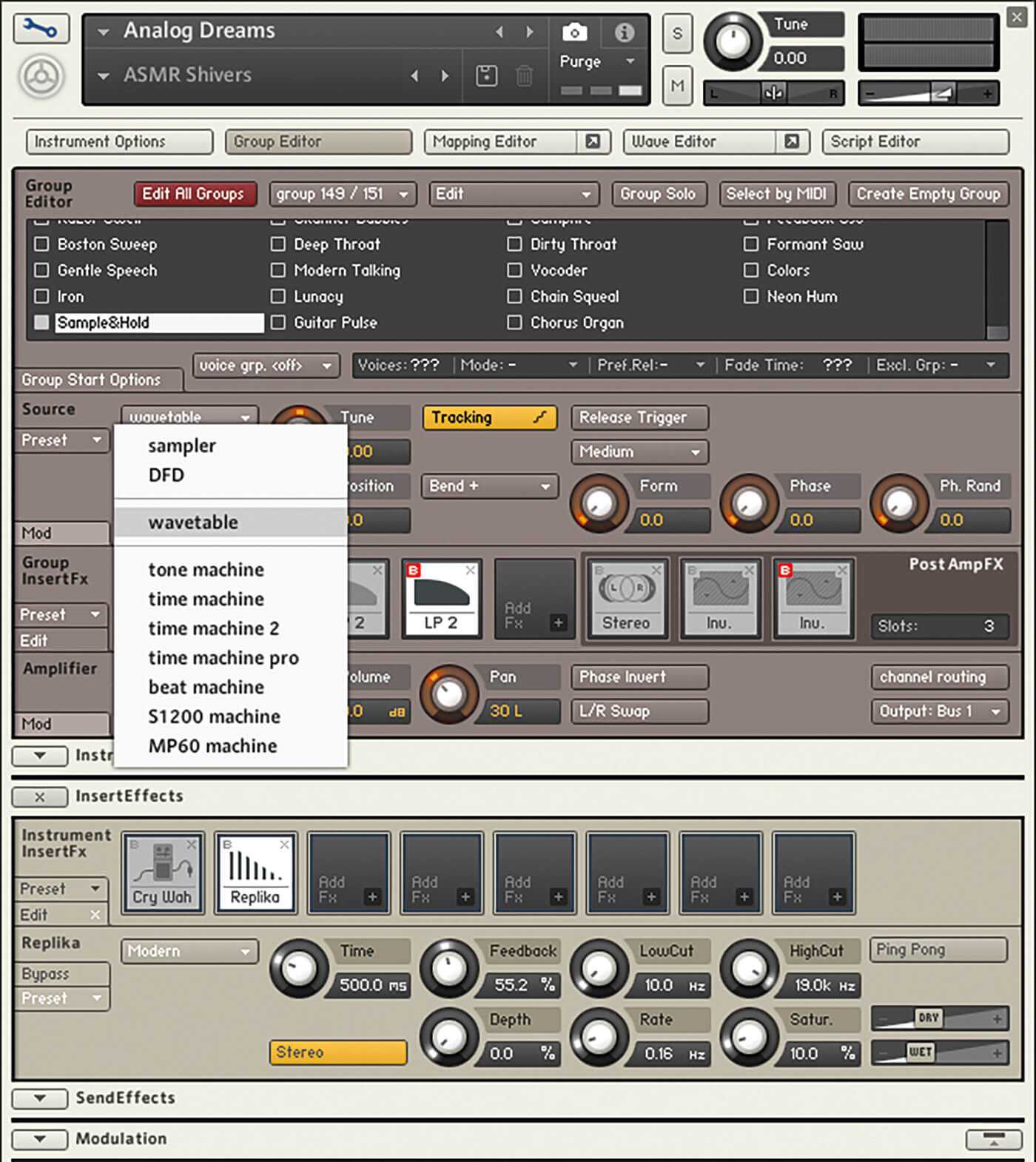
Kontakt 6 also has five new effects processors including Replika Delay, based on the standalone Replika and Replika XT plug-in; and Cry Wah, a wah-wah effect modelled on the classic Cry Baby wah pedal. On top of this, there’s also a new Creator Tools package (NI appears to have momentarily forgotten its compulsion of replacing Cs with Ks there!), a standalone suite of tools that assists in the creation and packaging of Kontakt instrument libraries.
Kontakt’s update is more incremental than revolutionary. The new synthesis module and effects processors are welcome and the new libraries contain a rich, exciting and varied range of sounds, but at its heart the software remains unchanged… which, with something as mature and well designed as Kontakt, is definitely a good thing – no change for change’s sake here.
3. Elysium Harp
By: Soundiron
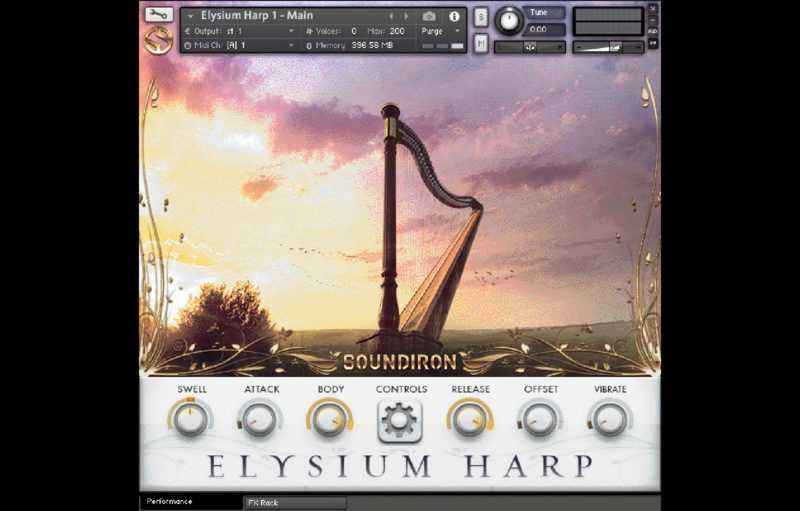
Elysium Harp is a 47-string grand concert pedal harp virtual instrument library, fully compatible with the free Kontakt Player and Komplete Kontrol S-Series Keyboards by Native Instruments. We recorded this massive Lyon & Healy bronze concert harp in exquisite detail, with extended articulation choices, advanced controls, easy play-assist features and warm presence across the entire key range.
We’ve covered classic Finger Plucks with long sustains, deep round-robin and dynamic layering for each string. We also recorded Hard Fingernail plucks, Harmonics, Xylophonics, Bass Pedal Buzzes, plus a wide collection of natural Live Glisses in 19 scales and styles by harpist Jennifer Ellis.
You’ll find lots of custom ambiences, pads and unique FX presets created with the harp source to open up limitless sound design possibilities. You also have access to 3 stereo mic positions (sound board, rear ports & room) to freely mix and route, plus an advanced real-time gliss and arpeggiator sequencers, instant pedal presets for easy glissing and arpeggios, precise tone and presence shaping and a full FX rack for total creative freedom. Elysium Harp contains 12,147 samples and over 30GB of wav content.
The library is compressed to 14.7 GB with NI’s lossless .ncw audio format for greater resource efficiency. It works in Kontakt or Kontakt Player version 5.5.2 and later.
Deep-Sampled Articulations
- 8 round-robin variations per dynamic layer
- Finger Pad Plucks
- Finger Nail Plucks
- Soft Harmonic Plucks
- Hard Harmonic Plucks
- Xylophonic Plucks
- Bass String Pedal Buzz Effects
- 194 Natural Glisses in 19 scales and styles by harp soloists Jennifer Ellis
- Dozens of custom ambiences, organic synth pads, tonal atmospheres and FX presets crafted from the harp source recordings and presets.
Dynamic User Interface
- Powerful Custom User Interface with fully automatable access to critical performance controls.
- Front Sound Board microphone position for a full, rich sound. Captured with Neumann TLM 103 microphones.
- Rear Sound Port microphone position for a deeply resonant and hyper-present tone, captured with Neumann TLM 102 microphones.
- Overhead Room microphone position for a deeply resonant and hyper-present tone, captured with Neumann TLM 107 microphones.
- Mixer module for custom channel mixing, loading, positioning and routing.
- Adaptive Arpeggiator system with preset saving/loading and tons of tweakable options to make arpeggios inspiring and easy to play.
- Dynamic Gliss generator that lets you draw your own gliss speed and velocity shapes and curves.
- Intuitive Pedal system that lets you select from dozens of classic harp pedal configurations and instantly snap your keyboard to both common and specialized scale types and keys.
- The Arpeggiator, Gliss and Pedal systems make it extraordinarily easy to play beautifully life-like glisses, arpeggios and melody lines in real-time. Just load it up and start playing!
- Modular DSP FX Rack panel with a full set of automatable controls for every effect unit.
- 119 integrated convolution IR samples recorded in a variety of rooms, environments and FX spaces.
Product Specs
- Product Version 1.0
- 12,145 Samples
- 30.6 GB uncompressed / 14.7 GB Installed with lossless ncw compression
- 9 nki Kontakt instruments
- 63 nksn snapshots
- 24 bit / 48kHz lossless NCW format samples
- Works with the free Kontakt Player (version 5.5.2+)
Buy
INSTALLING NATIVE INSTRUMENTS KOMPLETE START IN FL STUDIO
So when we open up FL Studio, you can go to the plugins tab on the left side in the browser window.
Right click on it until you see the menu appear and go to the “manage plugins” option.
This will open up the plugin manager window.
ADDING FOLDERS AND SCANNING FOR NEW PLUGINS
You will need to add the file folders where you installed the Native Instruments plugins.
This is different than the folders we just set up a minute ago.
If you don’t remember, you can open up Native Access to see which folder the plugin was installed into.
You will add this folder to the list of folders that FL Studio scans to find plugins.
I kept the defaults for plugin installation from Native Access, so the plugin folder was located at:
C:\Program Files\Native Instruments\VSTPlugins 64 bit
Check and make sure what your folder name is.
Scan your computer with these new folders added.
You should see the new instruments show up on the right side list of items available.
They will be highlighted in a yellow color, indicating that these are the new plugins that FL Studio found when it searched your system.
Great! So far, so good.
Now we need to get the instruments loaded into the project, and then make them easy to access for future projects as well.
FINDING PLUGINS IN THE BROWSER
So now that we scanned the folders in FL studio to find the new plugins we installed from Native Access, we can close the Plugin Manager.
Now let’s go back out to the browser window.
If your browser is not open on the left side of FL Studio, you can press ALT + F8 to open it up.
Then click on the plug icon at the top of the window
Click on Installed.
This should show you Generator and Effects.
The difference between generator and effects in fl studio is that generators create the sound, effects modify the sound.
Let’s start with adding the generator plugins.
ADDING GENERATOR PLUGINS
Click on the generator folder.
The click on VST.
When you do that you should see the new plugins from Native Instruments.
I see Komplete Kontrol, Kontakt, and Reaktor.
If I want to load one of these instruments, then I can left click and drag it over to the channel rack.
I will drag over Kontakt.
When you do that, Kontakt will open up.
And after it loads in the new libraries that you installed you should see a window that looks like this:
I navigate under the factory selection, pick the band folder and drag the upright bass into the empty part of the window on the right side.
You can click the keys on the bottom of the window to hear the sampled notes that will play for the upright bass.
And now you can use that instrument in your project.
You can go into the piano roll and create a bassline, or you could use a midi keyboard and record the notes that you want to play.
SAVING THE PLUGINS TO A QUICK SELECT FOLDER
So now that you know how to load up the instrument for the first time, I want to show you a way that you can save Kontakt to a list. Then you can load in Kontakt to the channel rack more quickly and easily.
Under the Generator folder in the browser window click on that line that says Native Instruments so that it is highlighted.
Then I will go back to Kontakt.
Click on the arrow at the top left of the window.
A drop down menu will appear.
Choose the option “add to plugin database (flag as favorite)”
Another popup will come up to ask you if you want to add this to “Native Instruments”
Click okay.
Now when you click on Native Instruments folder in the browser window, you will see Kontakt appear.
You can repeat this process for all of the Native Instruments generators:
- Load them into the channel rack.
- Make sure the Native Instruments folder is selected under generators.
- Use the drop down arrow on the instrument to add the instrument to plugin database and confirm.
So why do you go through all that trouble?
LOADING INSTRUMENTS FROM THE QUICK ACCESS MENU
If you look at the bottom of the channel rack window, there is a plus icon.
Click on the + icon and you will see a list appear.
Now that new list of instruments you just created under the heading Native Instruments is there in that menu.
It means you can quickly load up Kontakt, Reaktor or Komplete Kontrol.
This is super handy. Now you don’t have to navigate through all the different layers and folders to find the instruments in the browser window.
You just have to click the + icon and select the instrument you want.
Now let’s move over to the mixer, and I’ll show you how to do the same thing with the Native Instruments effects.
KONTAKT: THE BIG PICTURE
KONTAKT is an extremely powerful, complex, and capable instrument. Before getting into specifics, let’s take a step back first and describe KONTAKT in general terms.
The structure of most samplers, hardware or software, is similar to that of a synthesizer: at its source, some kind of sound generator outputs unprocessed signals in response to incoming MIDI notes; these signals are then processed in a variety of ways and sent to the output. The difference is that the sound generator of a typical synthesizer creates its source waveforms entirely by electrical or mathematical means, often being limited to a range of well-defined waveforms, whereas a sampler can use any kind of previously recorded audio data — sampled acoustic instruments, sound effects, vocals, and (of course) any classic waveform known from synthesizers as well.
KONTAKT’s overall structure is not any different in this regard, albeit it is far more sophisticated than a lot of conventional samplers. For instance, KONTAKT does not force any particular signal flow structure upon your Instruments — it has an entirely modular approach to sound processing and parameter modulation. Anything is possible, from triggering simple one-shot samples to building sophisticated virtual instruments that faithfully reproduce all aspects of their acoustic counterparts and respond intelligently to your performance.
However, this power comes at a price; while you’ll be able to load and play your first KONTAKT Instruments right away, it will take some more practice to become a master at creating your own Instruments. We hope this manual will help you achieve this; also, whenever you’re stuck, remember you can get helpful hints from the Info Pane described in section Info Pane.
Building Blocks
The full functional range of KONTAKT’s sampling environment is split up into smaller sections, which allows you to concentrate on the task currently at hand without getting distracted by other details. This functional division is also reflected on the user interface; most elements that belong to a specific kind of task are kept within a separate pane, tab, or dialog window.
In this section, we’ll further distinguish two general types of building blocks: the core blocks, which are hierarchically organized and make up KONTAKT’s chain of turning MIDI data into sound, and the tools, which allow you to perform a wide range of peripheral management, configuration, and monitoring tasks.
5.1. Core Building Blocks
Let’s follow KONTAKT’s path of turning simple audio files into readily playable instrumental setups, starting from the smallest element and then working our way upwards:
•A Sample is a simple audio file on your hard disk. Samples may occasionally carry additional metadata, but in their purest form, they don’t provide anything other than a recorded audio signal. An example of a Sample would be the digital recording of a single piano note. Samples can appear in various formats, such as WAV, AIFF, or REX.
8dio Instruments Mini
8dio.productions · 8Dio Mini: «Timeless» (dressed) by Troels Folmann
Бесплатная библиотека 8dio Mini предлагает тысячи небольших сэмплов для изменения. В состав инструмента, кажется, вошли звуки всего, что разработчики из 8dio смогли найти под рукой. По итогу инструмент получил коллекцию из 5200 звуков разной направленности и возможность их гибкого изменения.
Библиотека предлагает звуки часов, радио, чашек, карандашей, бумаги, монет, стулов, ложек и палочек. Отдельная часть каталога посвящена «звукам человеческого тела»: щелчкам пальцев, стуку зубов, чмоканьям и прочему. Каждый сигнал обладает несколькими раунд-робинами — вариациями, делающими последовательное использование звуков более живым.
8. Victorian Pump Organ
By: Glitchedtones Software
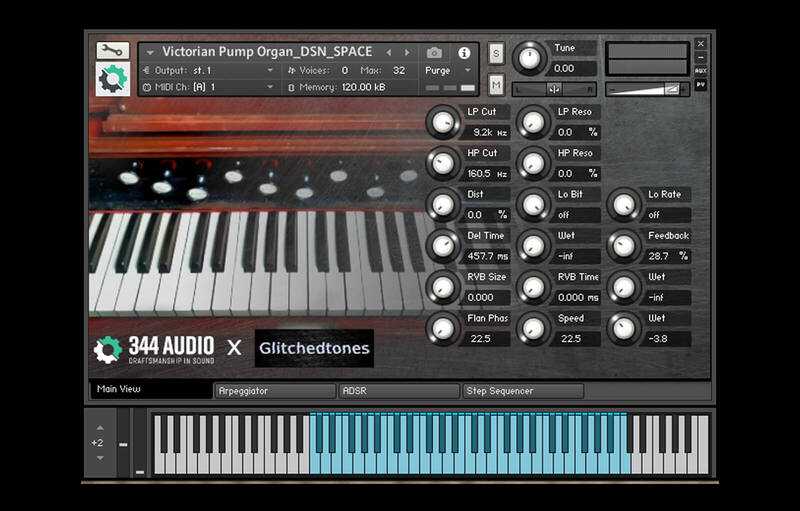
Victorian Pump Organ is our new steampunk-inspired Kontakt library made in collaboration with Stuart Keenan from Glitchedtones.
With 50 different patches including sound design, drum kits and foley, this instrument is perfect for musicians and sound designers to make everything from sea shanties, period style music from the 1800s and early 20th-century all the way to EDM tracks and horror/atmospheric scores.
Stuart Keenan from Glitchedtones faithfully captured a Victorian Pump Organ (built-in 1865, Canada) at a studio in Newcastle with 4 different microphones positioned for treble, bass and stereo room mic perspectives. Our Audio Craftsmen meticulously edited the samples and programmed 50 patches and integrated them into our Kontakt interface giving film composers, music producers, sound designers and game developers a vast array of options to create music and compositions in various genres.
MAIN FEATURES
- 50 Different Patches with Mic Mix (for main patches), Arpeggiator, Step Sequencer and ADSR.
- Sound Sources
- Victorian Pump Organ built in 1865, Canada.
- Usability
There are 9 main patches including 3 melodic patches, 4 chord patches and 2 foley patches with the organ adjusted at different stops.
We also recorded genuine major, minor and complex chords helping people with less knowledge in music theory to write songs and chord progressions. We also covered foley patches with keys, squeaks and pedal sounds to add an essence of natural character.
Our in house composers built additional designed patches which include; Harp like arpeggiators, ethnic instruments such as the harmonium all the way to electro leads, game boy organs and dubstep inspired basslines. We even manipulated samples and built patches for metal and rock music.
We have included patches for a variety of circumstances like abandoned church organs, space generators and creaky room voices.
We have also included low subsonic impacts and rumbles to add weight to your sounds and music. Some of the patches like glorious arp, telephone arp, tweeting birds, drunken organ, sea shanty organ, harmonica and cathedral hits are ideal for adding texture and interest.
Our user-friendly Kontakt interface provides a variety of controls that encourage experimentation within the patches.
We have included a mic mixing section with ADSR where you can adjust the levels for treble, bass and stereo (multiple mics) if you need to add more width to the mix. The built-in Arpeggiator and Step Sequencer are great for generating hundreds of variations in seconds.
We hope that you will take the opportunity to try out this fascinating and timeless instrument.
Buy
Как загрузить инструменты или добавить библиотеки в сэмплер?
Что касается загрузки инструментов, изначально определенную библиотеку для Kontakt 5 в список можно не добавлять вообще.
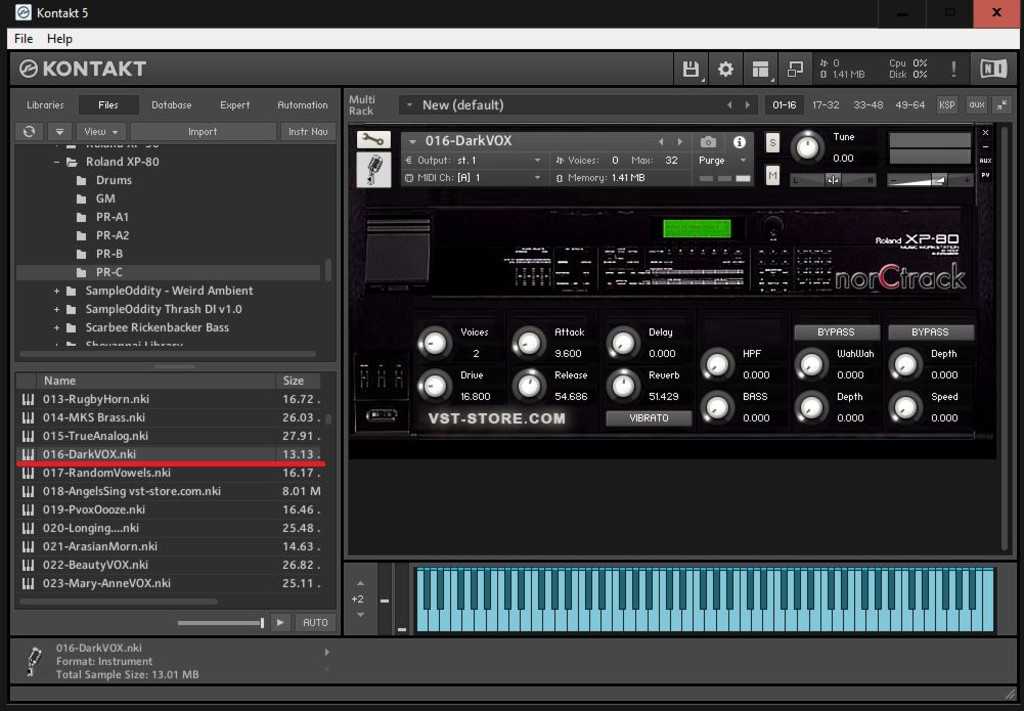
Достаточно просто выбрать нужный инструмент в виде одиночного файла в собственном браузере программы.
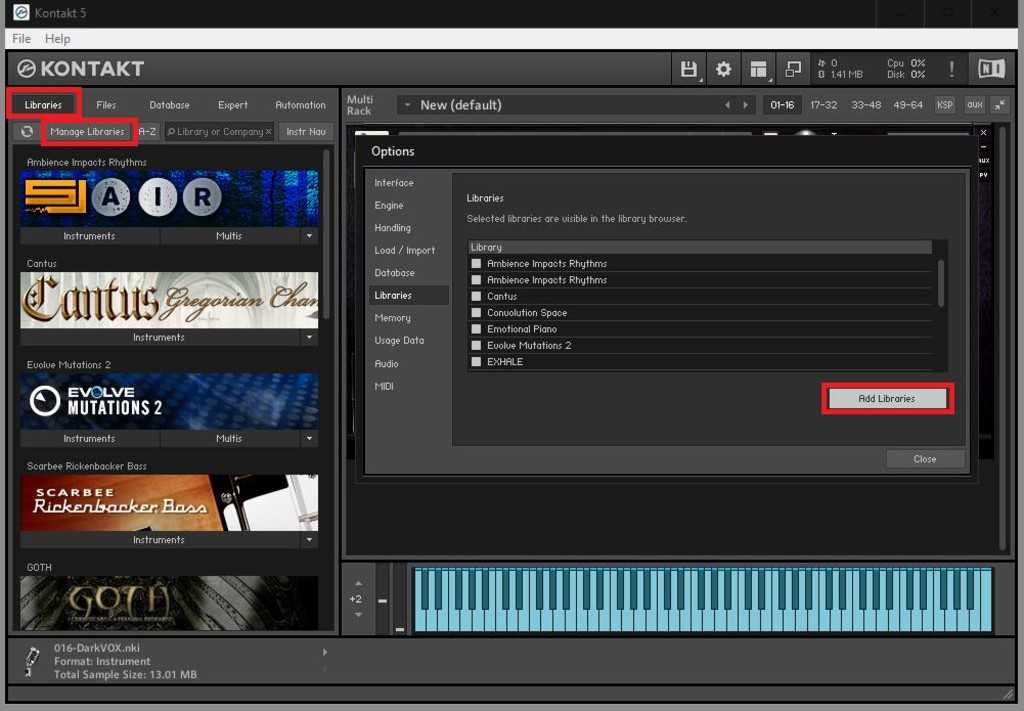
А вот именно добавление полных наборов можно произвести из меню библиотек (Libraries), в котором нужно нажать кнопку управления библиотеками (Manage Libraries), а затем просто выбрать директорию, содержащую файл .nicht) через нажатие кнопки добавления (Add Library). По окончании сканирования набор будет добавлен в основной список на левой панели. Но делается это исключительно ради удобства использования. В принципе, можно добавить любой набор, даже если файла библиотеки для него нет, но для этого придется выполнить достаточно много сложных действий с созданием специальных объектов в виде файлов и ключей реестра.
Kontakt 5.8.0 STANDALONE MAC OS
Системные требования: Mac OS X 10.11, macOS 10.12 or 10.13 (latest update), i5 4 GB RAM (6 GB recommended for large KONTAKT Instruments) Mac OS X (64-bit only): Stand-alone, VST, AU
Размер: 761.1 MB
Kontakt — стандарт в мире семплеров. Native Instruments Kontakt 5 предоставляет набор высококачественных фильтров, начиная от классических аналоговых схем и моделей с переменным состоянием до современных форматных фильтров. Некоторые из 37 новых фильтров используют новую концепцию Adaptive Resonance, которая автоматически управляет характеристиками фильтра, чтобы предотвратить неприятные звуковые артефакты от чрезмерных резонансных пиков. Пятая версия сэмплера также добавляет тайм-скретчинг TimeMachine Pro, который обеспечивает лучшее качество звука для гармонических соло инструментов. Секция эффектов в Native Instruments Kontakt 5 была расширена несколькими ключевыми дополнениями, которые фокусируются на студийном стиле обработки звука. Новые алгоритмы Solid G-EQ и Solid Bus Comp, позаимствованные из Solid Mix Series, позволяют осуществлять выравнивание и сжатие, а приобретаемый отдельно Transient Designer был интегрирован в раздел эффектов Kontakt в его первоначальном виде. Кроме того, новый аналоговый Tape Saturator может добавить натуральную компрессию и тонкий органический овердрайв, а старинные режимы сэмплирования, взятые из грув-машины Native Instruments Maschine были интегрированы в набор функций Native Instruments Kontakt 5. Для саунд-дизайнеров и профессиональных создателей сэмплов, Native Instruments Kontakt 5 предлагает новую систему шин инструментов, а MIDI-файловую поддержку, основанную на KSP. 16 внутренних стерео шин с их отдельными встроенными ячейками обеспечивают повышенную гибкость маршрутизации, функция MIDI-файлов в Kontakt Script Processor позволяют создавать продвинутые типы инструментов на основе инструментов с универсальной интегрированной функцией воспроизведения MIDI.
